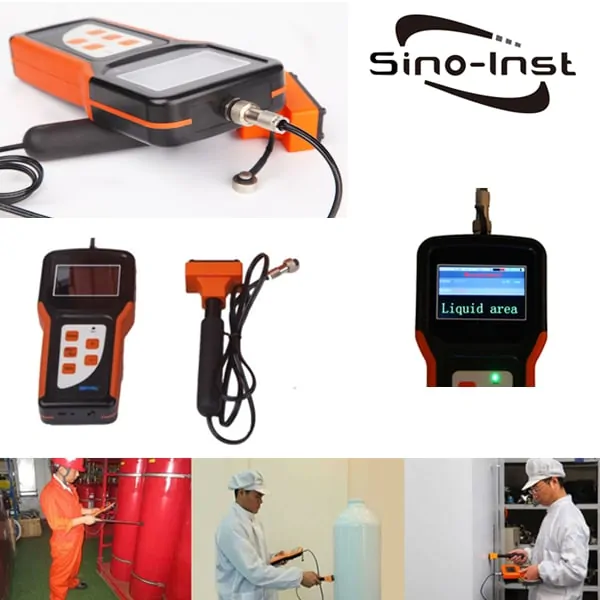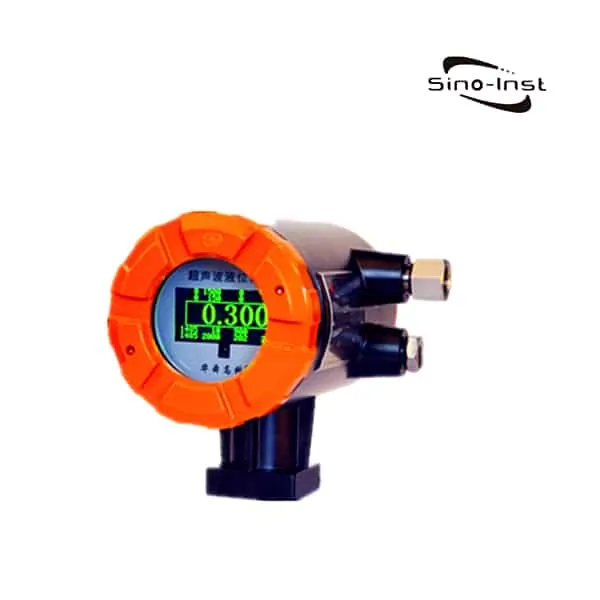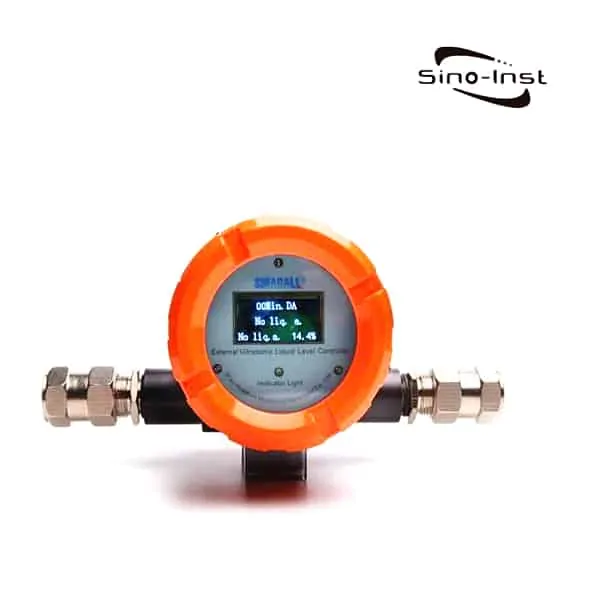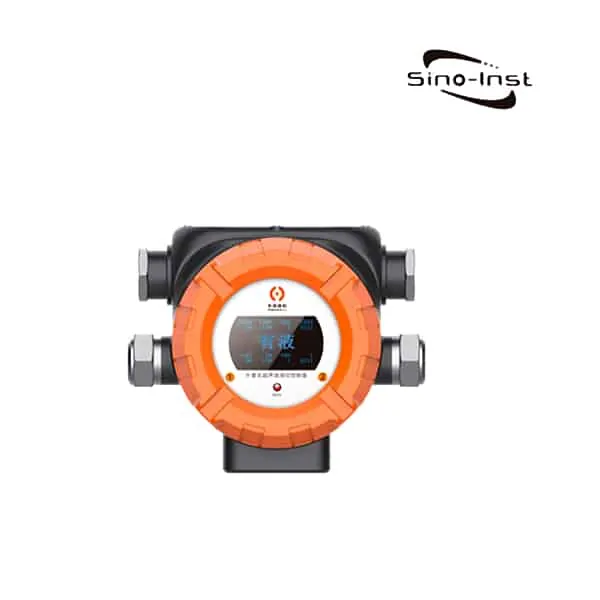Ultrasonic Liquid Level Sensor can realize non-contact liquid level measurement. Continuous online monitoring of water level and sludge interface position.
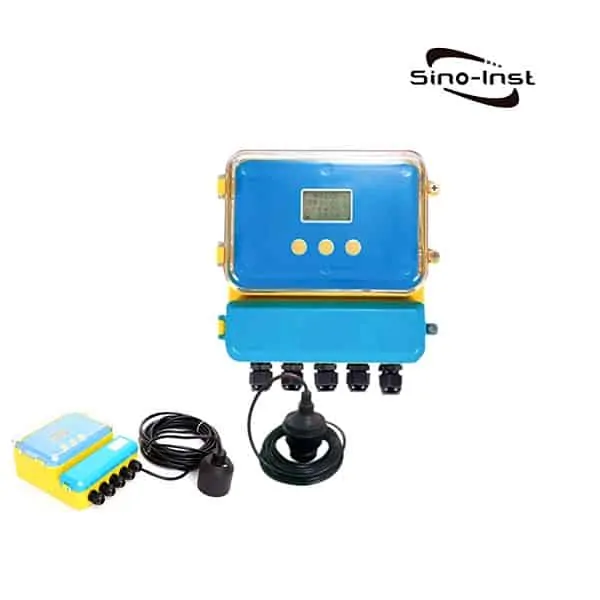
ULT-200 Ultrasonic Liquid Level Sensor is a split type ultrasonic liquid level/level sensor. Measuring liquid level and converting it to an electrical signal. Non-contact liquid level measurement can be achieved. Split ultrasonic level gauges are widely used for liquid level and volume measurement of tanks, pools, and reservoirs. It can also be used for flow measurement in open channels.
Sino-Inst offers a variety of Ultrasonic Level Sensors for level measurement. If you have any questions, please contact our sales engineers.
Features of Ultrasonic Liquid Level Sensor
- The distance accuracy can be calibrated online in different environments, the start and end points of the range, and the type of analog output. The lock value of the liquid level window can be set by the keyboard.
- Automatically track the ambient temperature to compensate for the distance value.
- With 2-4 limit settings. Can be used for liquid level segment or position control (optional).
- With RS485/232 serial data output or 4-20mA/0-20mA analog output or 1-5V/0-5V analog output (optional).
- With “echo intelligent recognition” function and “medium slope” digital filtering function.
- For Xiaotong’s measurement target, the user can set the detection cycle from 100 times to 0.1 times per second;
- With the option of value-added/difference ranging mode, both ranging and position measurement can be performed.
- It can be operated by keyboard. Turn on the backlight of the LCD display at night for easy viewing and debugging. You can also turn off the display during work to save energy.
- It has 1-15 levels of transmission power options, which can be set and modified at any time according to the working conditions.
- It has functions such as temperature compensation, window locking and anti-interference error correction, medium sound velocity adjustment (optional when ordering).
- It has the function of arbitrarily digitizing the start and end of the full scale.
- It has an artificial digital correction platform for temperature difference compensation in the acoustic wave transit area.
- With 4mA, 20mA digital fine-tuning function, debugging is very convenient and quick.
- When the LCD displays, the display information is very rich, from the level, weight, temperature, current, voltage, limit switch status and other information are all displayed on the LCD screen, so that the user can know the working status of the instrument.
- Serial data transmission can be sent either point-to-point or bus type.
Extended reading: Sludge flow meter for sewage treatment return activated sludge system
Specifications of ULT-200 Ultrasonic Liquid Level Sensor
| Features | Split type |
| Range | 5 meters, 10 meters, 15 meters, 20 meters, 30 meters, 40 meters, 50 meters, 60 meters, 70 meters, |
| measurement accuracy | 0.5%-1.0% |
| Resolution | 3mm or 0.1% (whichever is greater) |
| display | Chinese LCD |
| Analog output | 4~20mA/510Ω load |
| Relay output | (Optional) Single channel is 2 groups, dual channel is 4 groups AC 250V/ 8A or DC 30V/ 5A state programmable |
| powered by | Standard 220V AC+15% 50Hz Optional 24VDC 120mA Customized 12VDC or battery power supply |
| Ambient temperature | Display instrument -20~+60℃, Probe -20~+80℃ |
| Communication | Optional 485, 232 communication (factory agreement) |
| Protection level | Display instrument IP65, probe IP68 |
| Probe cable | Up to 100 meters, standard 10 meters |
| Probe installation | According to the range and probe selection |
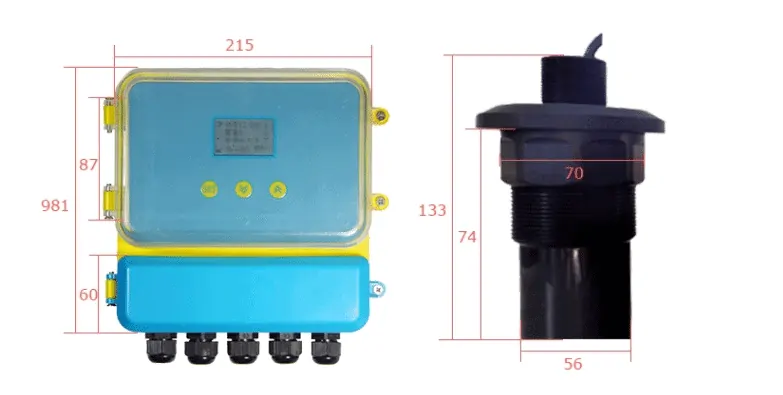
Extended reading: Radar Non Contact Water Level Sensor
Applications of Ultrasonic Liquid Level Sensor
- River and reservoir level measurement
- Tank measurement
- Reservoir
- Water tank water tower
- Acid-base tank level monitoring
- Reactor/tank/liquid level measurement
- Manhole
- Municipal Engineering
- Tap water
- Sewage treatment
- Water Resources and Hydropower
- Urban rivers and lakes, transportation and food processing industries
- Sewage treatment plant: primary sedimentation tank, secondary sedimentation tank, thickening tank, etc.
- Water supply plant: sedimentation tank
- Coal washing plant: sedimentation tank
- Power plant: mortar sedimentation tank, etc.
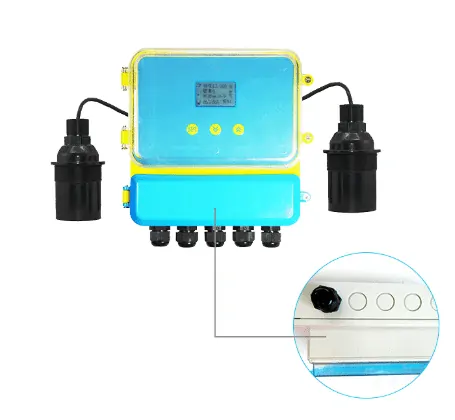

More about Application 1: Liquid Level Monitoring In The Food And Beverage Processing.
Ultrasonic Level Measurement Principle
How does ultrasonic level measurement work?
When Ultrasonic Liquid Level Sensor is working, high-frequency pulse sound waves are emitted by the transducer (probe). The surface of the measured object (water surface) is reflected. The returned reflected echo is received by the same transducer (probe) and converted into an electrical signal.
The time between the sending and receiving of the pulse (the movement time of the sound wave) is proportional to the distance from the transducer to the surface of the object. The relationship between the distance S of sound wave transmission and the speed of sound C and transmission time T can be expressed by the formula: S= CⅩT/2
Extended reading: Case Study: Automatic Sludge Blanket Level Detector
The installation of ultrasonic level meter must consider the blind area of ultrasonic level meter. When the liquid level enters the blind zone, the ultrasonic transmitter cannot measure the liquid level. Therefore, when determining the range of the ultrasonic level gauge, a margin of 50 cm must be left. When installing, the transmitter probe must be about 50 cm above the high liquid level. Only in this way can we ensure the accurate monitoring of the liquid level and the safety of the ultrasonic level gauge.
Pay attention to the mechanical installation:
The installation should be perpendicular to the surface of the object to be measured, avoid using it to measure foamy objects. Avoid installation where the distance from the surface of the measuring object is less than the blind spot distance. Blind spot: Each product has a standard, which is known with the product. It should be considered that the beam avoids the blocking material and does not meet the filling mouth and the container wall. When detecting large solid objects, the probe position should be adjusted to reduce the measurement error.
Extended reading: Guide to Ultrasonic Level Transmitters
More Featured Ultrasonic Level Sensors for Tanks
Extended reading: Ultrasonic level transmitter for Hazardous Liquids
Ultrasonic Liquid Level Sensor Advantages and Disadvantages
The advantages of ultrasonic liquid level sensor are very outstanding. It is mainly reflected in the following aspects:
- The structure is simple. The reading is convenient. It is very easy to install and maintain.
- Safe and clean. The instrument has long service life. The measurement is stable and reliable with high precision.
- Adopt non-contact measurement. It is not easily affected by the viscosity and density of the liquid.
Of course, the ultrasonic liquid level sensor also has its own limitations and insurmountable defects. Specifically, it is mainly manifested in:
- There is a blind spot in the ultrasonic liquid level measurement. The dead zone is the area where the meter cannot measure. During the transmission of ultrasonic pulses, a small area near the ultrasonic transducer usually cannot receive sound waves. The blind zone where sound waves cannot be received is related to the measurement distance of ultrasonic waves. Generally speaking, the smaller the measurement distance, the smaller the blind zone. The larger the measurement distance, the larger the blind zone;
- Ultrasonic liquid level measurement is easily affected by temperature. In the actual measurement, the change of temperature will cause the change of sound speed. This will lead to errors in the measurement;
- There should be no obstacles under the sound wave. Because the ultrasonic liquid level meter uses the principle of sound wave reflection to achieve liquid level measurement. If there are obstacles, it will affect the ultrasonic emission, causing signal loss and affecting the measurement effect;
- Ultrasonic liquid level sensor should not be used to measure pressure vessels. Because the pressure mainly affects the probe. There is also a certain relationship between the pressure and the temperature. The change in pressure will affect the change in temperature. This will affect the change in the speed of sound. The accuracy of the measurement will be affected;
- Ultrasonic liquid level sensor can not be used in the occasions with water mist, medium that is easy to produce a lot of foam, and volatile medium. Because this kind of working condition is easy to absorb the sound wave or interfere with the sound wave emission, the signal is lost and the accuracy is reduced;
- Ultrasonic liquid level sensor is greatly affected by dust. This is because although the dust environment has little effect on the speed of sound, it has a very significant effect on the attenuation of sound waves. Therefore, it is best not to use an ultrasonic level gauge in the presence of dust.
Extended Reading: Procurement Guide for Ultrasonic liquid level sensors
Related Blogs
Extended reading: Magnetostrictive Hydraulic Cylinder Position Sensor
Sino-Inst offers 20 ultrasonic level detectors products. About 13% of these are ultrasonic level transducers, 4% are ultrasonic level indicator. A wide variety of Ultrasonic liquid level sensor options are available to you, such as free samples, paid samples.
Sino-Inst is ultrasonic level transmitter suppliers, located in China.
UltraUltrasonic liquid level sensor products are most popular in North America, Mid East, and Eastern Europe. The United States, and India, which export 99%, 1%, and 1% of ultrasonic level transmitter respectively. You can ensure product safety by selecting from a certified supplier, with ISO9001, ISO14001 certification.
Request a Quote

Wu Peng, born in 1980, is a highly respected and accomplished male engineer with extensive experience in the field of automation. With over 20 years of industry experience, Wu has made significant contributions to both academia and engineering projects.
Throughout his career, Wu Peng has participated in numerous national and international engineering projects. Some of his most notable projects include the development of an intelligent control system for oil refineries, the design of a cutting-edge distributed control system for petrochemical plants, and the optimization of control algorithms for natural gas pipelines.

